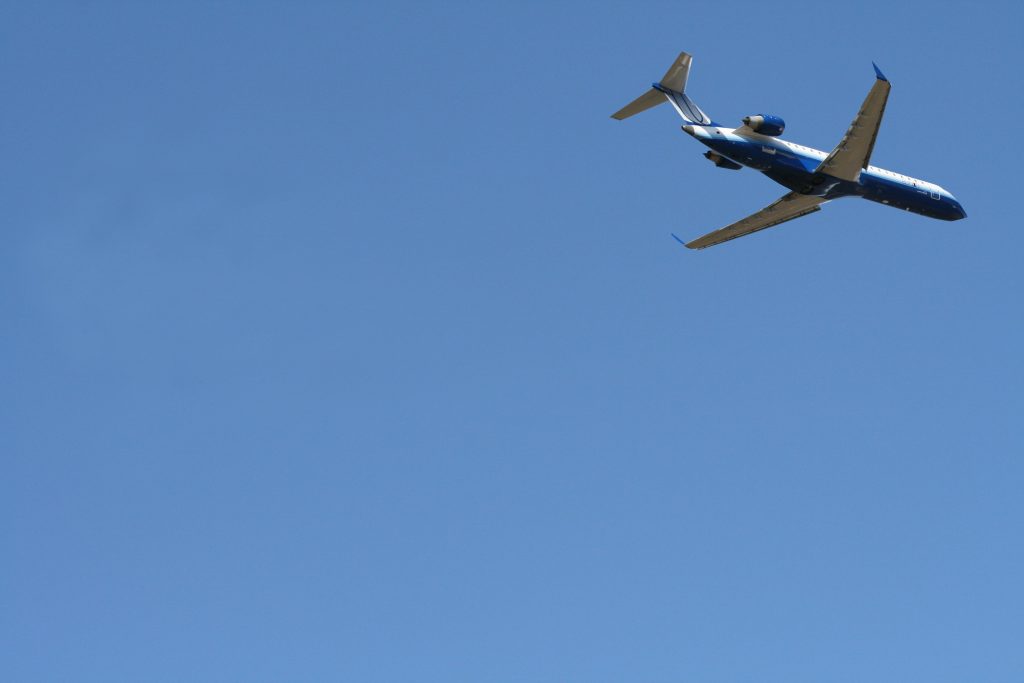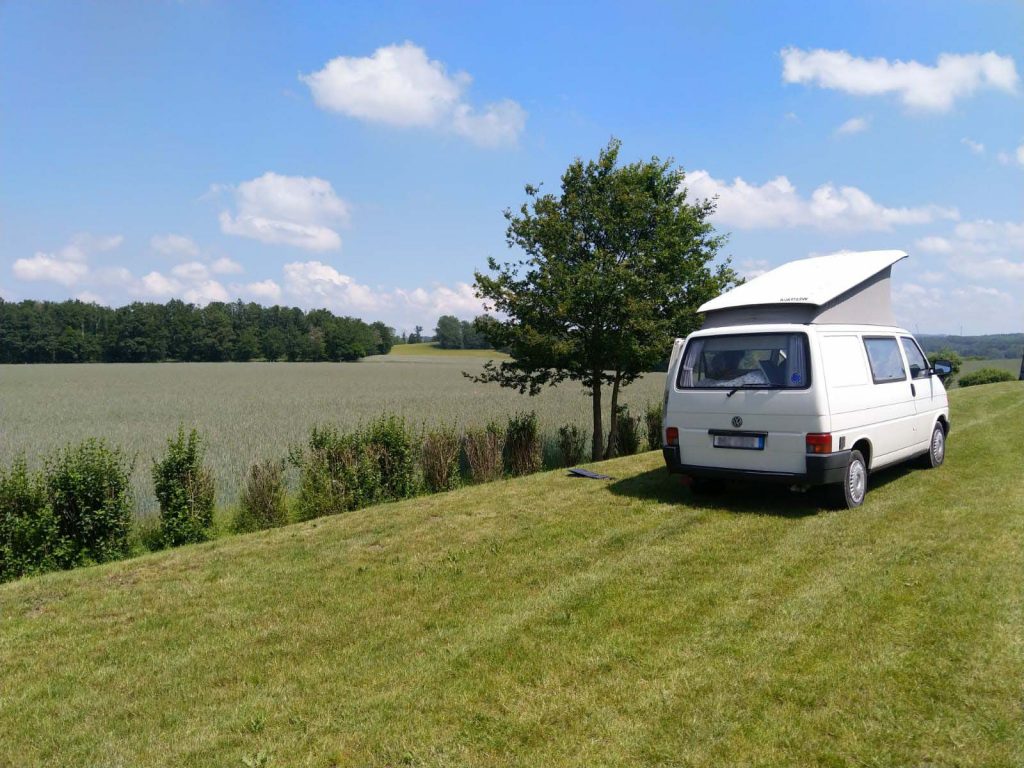
Flying to reach a holiday destination feels like a no-brainer for many Germans. Our passport gives us the greatest freedom to travel: much like the South Koreans, us Germans can enter 189 countries without a visa.[1] But are flights as a means of travel an option for much longer? While facing climate change and destruction through mass tourism?
The initiative Slow Travel Journey of six young women says: “No”. They propose a „staycation“, to stay home and travel in the near surroundings. For them, flying is not Slow Travel. They voluntary gave up flying for one year.[2] People who are interested can join their flight fasting action “The Year of Slow Travel“.
While creating articles for the Slow Travel blog, I also asked myself, if airplanes can be used as a way of transportation while Slow Traveling.
PRO. Flying ist Slow Travel
Original definition: The Slow Travel trend can be traced back to Pauline Kenny (story of origin).[3] For her, Slow Travel is more about traveling consciously and mindfully to gain deeper insight into the holiday destination. From 2006, new interpretations arose: Slow Travel was limited to train travel and airplanes were seen as banned. But according to the trendsetter, flight travel was never excluded from Slow Travel.
Tourism industry: Holiday destinations profit from flight tourism. Many locals work in the tourism industry as guides, translators, drivers, waiters/waitresses, cooks, performers or organizers. Even people without education who live in the countryside are selling local products or offer accommodation. Slow Travelers try to support the local economy of the holiday region. Without flying they and their money wouldn’t reach the area in the first place. Many people in Asia, Africa or South America and other developing places would lose the income that they built up on tourism.
Ways of transportation with added value: Many travelers enjoy the takeoff and landing while flying as well as the view of the clouds and mountains – a wonderful travel experience. Additionally, there are warm meals, alcoholic beverages and a large range of entertainment possibilities during flights (sometimes paid extra). For some, flight travel can become an oasis of relaxation.
Duration of stay: There are plenty of people who fly to Milan or Madrid just for a weekend of shopping. For them, the airplane is the new remote bus. They don’t think about their travel’s eco-balance. But the duration of a stay can also be longer than a weekend. In Slow Travel, the travel time is set along the travel intention. It has to be in a reasonable relation. Someone who is planning a year abroad in Canada or Australia will still choose flying as a way of transport. For a shopping trip from Germany to Milan a Slow Traveler would take a bus or train.
Sacrifice: Slow Travel should not be associated with sacrifice. So why should travelers stop flying, if it is a convenient way to travel?
CON. Flying is not Slow Travel
Stress factor flying: Some Slow Travelers criticize the fast travel duration with airplanes. For many tourists it represents the necessary evil, which is being accepted to reach the holiday destination. The arrival is eagerly awaited, whilst the travel itself is not really perceived.[4] Accordingly, the flight is lowering the quality of the travel.
Slow transportation: During Slow Travel the way is the goal. The travelers chose a slow method of transportation that offers an added value. Transport is seen as part of the journey. This means, for a travel from Germany to Poland a train or bus is preferred over a cheap flight. During the travel, the landscape can be watched or one can prepare oneself for the holiday destination. Maybe new friends are made along the way.
Luxury and privilege: Flying used to be luxury – a seldom used, special way of transportation. People saved up for flight travel for years. Holidays to other continents were rarely made, maybe just once in a lifetime. The young generation could not afford flying at all. Today, teenagers can go on world trips after graduating school and think this is normal (I cannot exclude myself from this). By now, you can buy flights for dumping prices. There were even sales from airline carriers like Ryanair that gave flights away for free.[5]
At the same time, flying is still a privilege for the comparatively rich. Based on estimates, a fifth of the world’s population is sharing the yearly flights amongst themselves.[6] People from developing and emerging countries are still aiming to reach this living standard. This means, Millions of people are waiting for finally being able to use the luxurious transportation method airplane. The Western world is promoting this lifestyle. But facing climate change and dumping prices, it is time to see flying again as what it is: a luxury good.
Burden for the climate: Flying is harming the climate. 2017, about 859 tons of the global energy-based carbon dioxide emissions could be traced back to passenger flights. Besides carbon dioxide, airplanes produce other emissions, which contribute to climate change additionally. The steam that occurs by burning jet fuel is also harming the climate. It creates icy clouds at an altitude between 8 and 13 kilometers (cirrus clouds) which are letting sunlight pass through, but reflect heat back to the earth. About 4 to 5 % of the yearly global warming is attributed to the civil aviation industry.[7]
The ones who want to lower their individual carbon footprint should skip flying. A longer flight is producing at once as much emissions as some people in Africa cause in one year.[8] A flight from Frankfurt to Los Angeles currently produces 1,370 kg of carbon emissions.[9] The average footprint of people in Germany is about 8,400 kg carbon dioxide per year. The average footprint of people worldwide is 4,800 kg (State 2018).[10]
Carbon offsets are a hoax: There are providers like atmosfair and myclimate, which are offering carbon compensations for your flights. The amount of the offset is calculated by the airplane type and the flight distance. For a return flight from Munich to Vienna for example, you would pay around 10.00 Euro. But the business model is being criticized. In reality, the carbon offset projects wouldn’t reduce emissions. The money would be used for projects in Africa, Asia or South America, where it’s cheaper. But the projects would cause conflicts between the locals and in some cases would even harm human rights. The ones who have to compensate their emissions would clearly live off limits. Therefore, it would be better to not fly at all.[11]
CONCLUSION
Flying is a sensitive topic between Slow Travelers. Some skip flying in general as a way of transport, while others still take flights, e. g. for longer stays abroad. For them, aspects like travel time and environmental factors influence the decision-making process. In Slow Travel flight travel is not „banned“ but is being avoided. Reasons to do so exist and are grounded on facts, mindfulness and the preservation of our earth.
Tip: An interesting debate on this topic was published in the magazin fluter. “Reise ins schlechte Gewissen”(2016, German)
[1] Prior to the Corona pandemic, state 2021. See Travelbook (2021): Die Pässe mit der größten Reisefreiheit weltweit, In: https://www.travelbook.de/reisen/visa-restrictions-index-welt-ranking-der-reisepaesse (01.02.2021).
[2] Of course, it’s not a big difference, if one skips flying for one year. But the challenge is based on the assumption that people who stop flying for one year will also chose their way of transport in the future more mindful. It’s like eating a veggie dish one day per week and later turning vegetarian.
[3] Statement of Kenny, Pauline (2019): What is Slow Travel?, In: https://www.sloweurope.com/community/resources/what-is-slow-travel.140/ (26.09.2020).
[4] See Gardner, Nicky (2009): A Manifesto for Slow Travel, In: https://www.slowtraveleurope.eu/slow-travel-manifesto (01.02.2021).
[5] See Gibbons, Brett (2020): Ryanair giving away thousands of free flights in massive Black Friday sale, In: https://www.dailypost.co.uk/whats-on/whats-on-news/ryanair-giving-away-thousands-free-19356529 (01.02.2021).
[6] See Weiß, Marlene, Benedict Witzenberger (2019): Wie sehr Fliegen dem Klima schadet, In: https://www.sueddeutsche.de/wissen/klima-fliegen-co2-grafik-1.4534651 (01.02.2021).
[7] See Ibid.
[8] See Periskop (2021): It’s about more than just CO2: The total climate impact of aviation, In: https://stay-grounded.org (01.02.2021).
[9] Based on calculations using the Flight Carbon Footprint Calculator: https://calculator.carbonfootprint.com/calculator.aspx?lang=en-GB&tab=3 (04.02.2021).
[10] See Statista Gmbh (2020): CO2-Emissionen pro Kopf weltweit nach ausgewählten Ländern im Jahr 2018, In: https://de.statista.com/statistik/daten/studie/167877/umfrage/co-emissionen-nach-laendern-je-einwohner/ (04.02.2021).
[11] See Periskop (2020): 10 Reasons Why Flying Like Before Covid Is A Really Bad Idea, In: https://stay-grounded.org/10-reasons-why-flying-like-before-covid-is-a-really-bad-idea/ (01.02.2021).
Article by Anika Neugart.
If you enjoyed this article, you might also like…

18 February 2021
Pro-Con: Is Van Life Slow Travel?
In recent years, the campervan of the 1970’s had a revival. Traveling with ones own mini RV is popular and, with the term Van Life, has also received a hip image. It’s both a lifestyle and way of travel at once. The campers live in their van and work from the road.